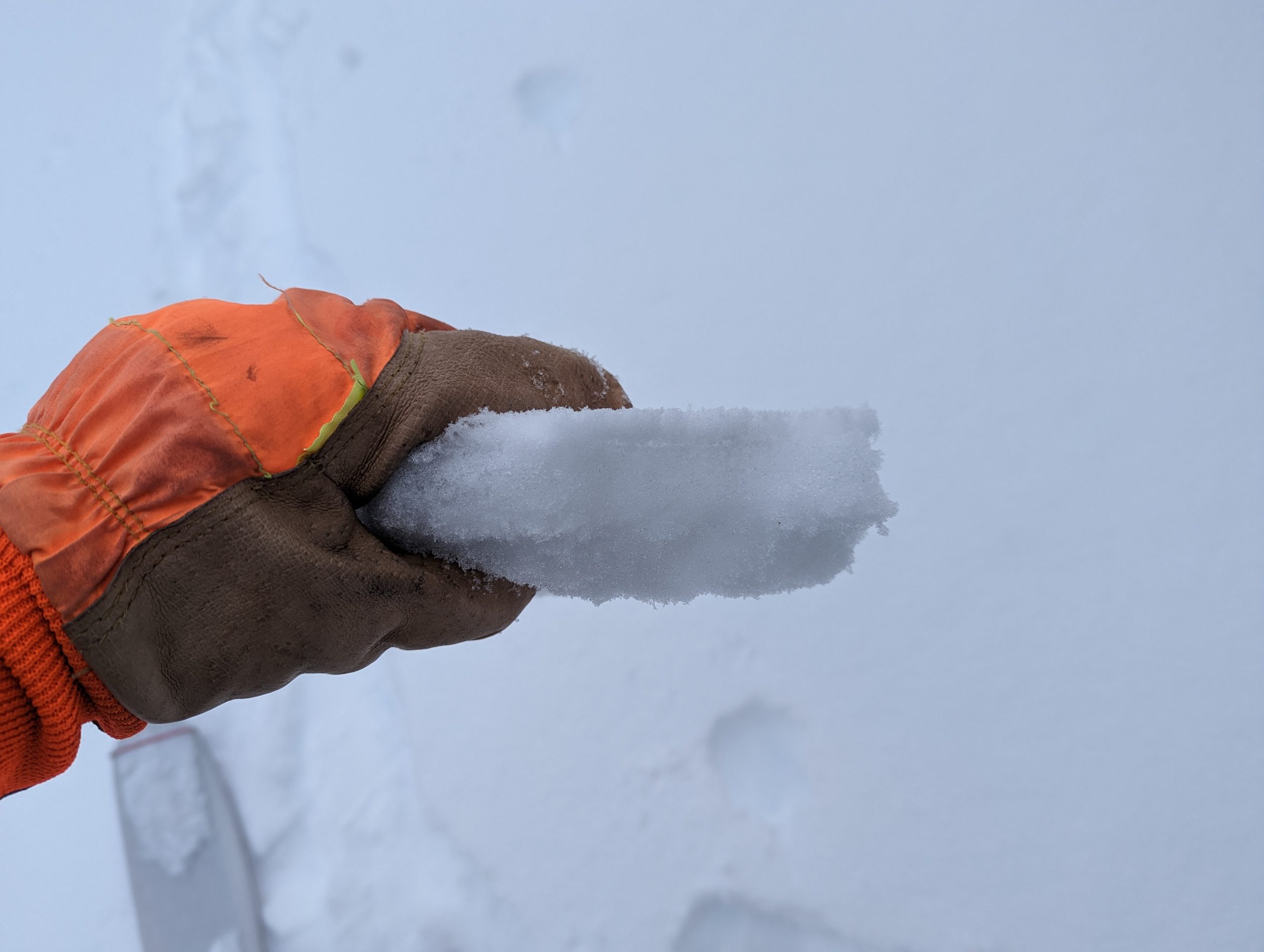The sun mostly stayed masked behind a layer of low elevation clouds yesterday in Turnagain Pass, which kept the snow surface crusty on solar aspects at upper elevations. Today thin low elevation cloud cover is expected to linger throughout the morning before giving way to clear skies this evening. On slopes that are receiving direct sunlight today it is possible that the 1-2″ thick surface crust will melt and wet loose avalanches will be easy for people to trigger. Loose snow avalanches are fairly predictable since they occur on the surface, but it can be surprising how much momentum they pick up on the way down a slope. This is especially true on longer slopes where wet loose avalanches can grow to be big enough to bury a person. Keep an eye out for softening and sticky surface conditions on east, south, and west aspects and be aware of the potential for loose wet avalanches to release naturally from steep rocky terrain.
Cornices are also more likely to fail spontaneously under direct sunlight and can drop large chunks of snow on the slope below. Try to avoid spending much time directly underneath cornices that are being heated up by the sun and look for signs of wet loose avalanche conditions as an indicator that cornices on similar aspects are prone to failure.
So far it has been a fairly cool and cloudy transition to spring and the snowpack is still holding on, but sooner of later we will start to see glide avalanches releasing to the ground. There are several glide cracks primed to release on the N end of Turnagain pass near Wolverine and along Seattle Ridge. It is strongly recommended to avoid spending time underneath glide cracks, especially during the heat of the day when the added melt could make them more likely to release.
 Fairly stout 1-2″ thick melt freeze crust at lower elevations on all aspects and at upper elevations on solar aspects. Photo 4.5.23
Fairly stout 1-2″ thick melt freeze crust at lower elevations on all aspects and at upper elevations on solar aspects. Photo 4.5.23

Wet loose avalanches on the SE face of Pyramid. Photo 4.5.23



